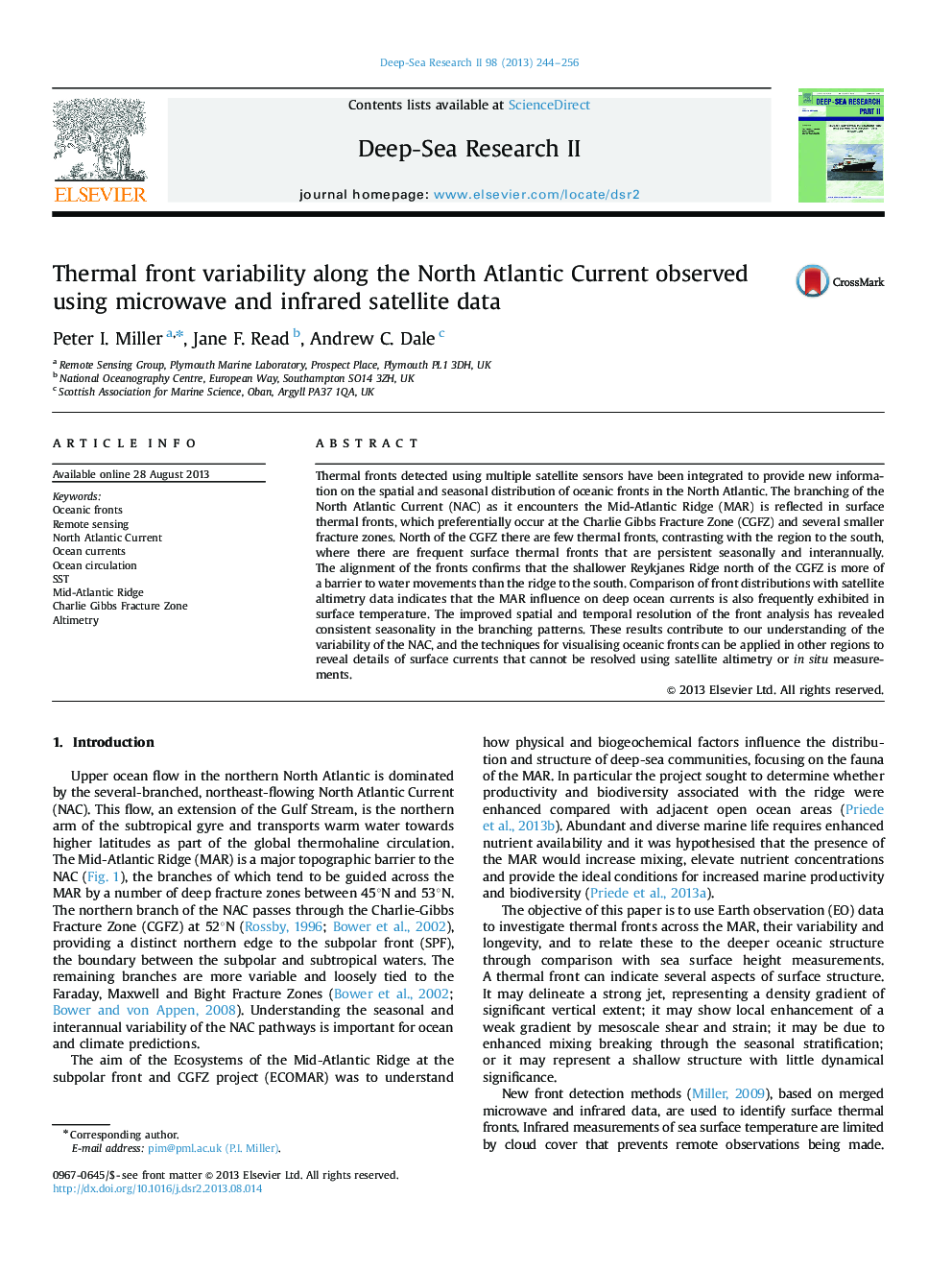| Article ID | Journal | Published Year | Pages | File Type |
|---|---|---|---|---|
| 6384305 | Deep Sea Research Part II: Topical Studies in Oceanography | 2013 | 13 Pages |
Abstract
Thermal fronts detected using multiple satellite sensors have been integrated to provide new information on the spatial and seasonal distribution of oceanic fronts in the North Atlantic. The branching of the North Atlantic Current (NAC) as it encounters the Mid-Atlantic Ridge (MAR) is reflected in surface thermal fronts, which preferentially occur at the Charlie Gibbs Fracture Zone (CGFZ) and several smaller fracture zones. North of the CGFZ there are few thermal fronts, contrasting with the region to the south, where there are frequent surface thermal fronts that are persistent seasonally and interannually. The alignment of the fronts confirms that the shallower Reykjanes Ridge north of the CGFZ is more of a barrier to water movements than the ridge to the south. Comparison of front distributions with satellite altimetry data indicates that the MAR influence on deep ocean currents is also frequently exhibited in surface temperature. The improved spatial and temporal resolution of the front analysis has revealed consistent seasonality in the branching patterns. These results contribute to our understanding of the variability of the NAC, and the techniques for visualising oceanic fronts can be applied in other regions to reveal details of surface currents that cannot be resolved using satellite altimetry or in situ measurements.
Keywords
Related Topics
Physical Sciences and Engineering
Earth and Planetary Sciences
Geology
Authors
Peter I. Miller, Jane F. Read, Andrew C. Dale,
